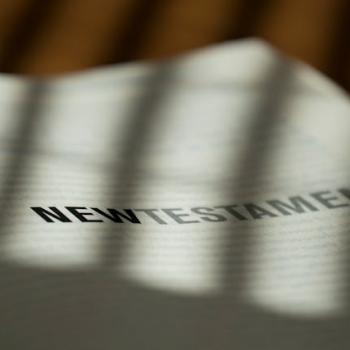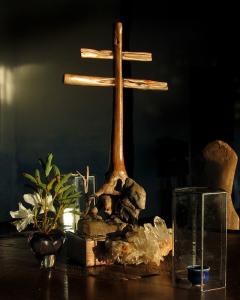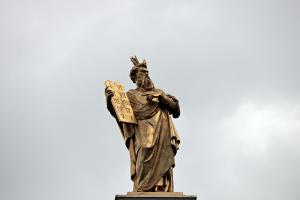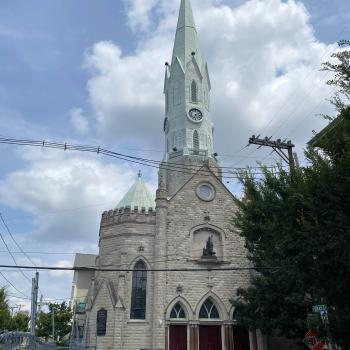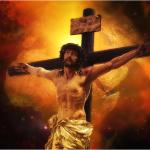Nearly all have seen the images, those of the late Jamaican icon, Bob Marley, smoking a mighty substance that was—for a time—bound to the realm of illegality. Indeed, the legendary reggae artist is well known today, not only for his exquisite discography, but also for his noted affinity for marijuana, and unique religious affiliation.

In the words that follow, I shall conclude my brief trek into the scholarship concerning sacramental hallucinogens by focusing on the latter two of Marley’s aforementioned attributes, describing their relation within a broader context. For the singer-songwriter’s emblem of spliff and dreadlock did not emerge in a vacuum; the ritual use of cannabis is well-ingrained within the Rastafari movement as a whole and represents a significant spiritual practice for many who claim Rasta status.
As with my previous post on the religion founded by Master Irineu, Santo Daime, I shall speak a bit about the origins of Rastafarianism before commenting on its utilization of sacred substances.
Prophecies Fulfilled
The year 1930 was deemed revolutionary not only because of the revered Raimundo Irineu Serra and his inner circle (see part 1 here), but on account of another incident as well. This specific juncture in world history marked the coronation of Ras Tafari Makonnen as emperor of Ethiopia, an event that sparked the beginnings of a new religious movement in the West Indies.
Those who comprised the burgeoning Rastafari religion viewed the crowning of Makonnen as Haile Selassie as the fulfillment of certain prophecies, including one articulated by the great Jamaican political leader Marcus Mosiah Garvey. The civic luminary declared: “look to Africa for the crowning of a Black King, he shall be the Redeemer.”[i] When Selassie assumed the throne, the early Rastas postulated that Garvey’s proclamation had indeed been realized and when this discovery was yoked with specific passages from the biblical book of Revelation, the emperor’s true nature was revealed to them.
These pious Jamaicans of the 30s understood Selassie as Christ’s second coming and Marcus Garvey, his John the Baptist. While it is true that the Christian Bible’s influence over the Rastafarian population is undeniable, a few words of clarification are necessary in order to properly understand its role within the faith. Among the adherents of the Rasta path, the text in question is regarded, like Christians, as divinely inspired, “but not all its contents are acceptable.”
Rastafarians believe that the Bible translation process has rendered the text somewhat corrupt; Western oppressors have made corrections (or corruptions) as they have saw it fit and so the King James Bible–the interpretation most often utilized by the community in question–is not without its philosophical blemishes. Nevertheless, Rastas often use biblical excerpts to substantiate their rituals, “especially in defense of the herb.”[ii]
The Chalice
Marijuana is regarded as a holy plant by those who follow the teachings of His Imperial Majesty, Jah Rastafari, with some devotees even labeling it as “‘the cup’, which refers to the pipe from which Rastafarians most often smoke ganja and which also establishes a relation to the communion cup of the Christian tradition.”[iii]
When asked about the spiritual legitimacy of their hallucinogenic practice, members of the Rastafari movement quickly direct the attention of their inquirer to passages such as Revelation 22:2 and Genesis 1:29; the latter of which says: “And God said, Behold, I have given you every herb bearing seed, which is upon the face of all the earth, and every tree, in the which is the fruit of a tree yielding seed; to you it shall be for meat.”[iv]
If God has decreed that cannabis is to be harnessed by the faithful, for what then is its purpose? The act of smoking the holy herb brings with it an ego-melting effect, it clears the mind of mental clutter, and ushers in a divine space within the Rasta’s bodily temple through which he may coax the divine presence to drift in and take up residence.
Rastafarians are adamant about ganja’s ability to induce “wisdom and understanding” and adoringly profess that it aids in “reasoning, meditating, praying, and communing with the brethren.”[v] Indeed, utilizing this sacrament allows the worshiper to contemplate on sacred scripture, the attributes of Jah, and the nature of reality more thoughtfully and profoundly while in theological exchange with surrounding believers.
As Rastas discuss celestial affairs with one another, the Word of God is made manifest, reasoning sessions become revelation, and the divinity within shines blazingly; it is the smoking of marijuana that hastens Rastafarians to this end.
Before engaging in the work of the “chalice,” Selassie’s sons and daughters “pray for a blessing upon themselves and in praise of Jah Rastafari,” for the Lord is truly with them when they engage in this sublime act.[vi]
The sacramental use of ganja is a purifying deed, but it is not essential for the journey of the Rasta. Each individual must decide whether it is an element of their own life’s expedition, just as it is heard in the words of the Conquering Lion himself: “No person is able to understand and solve one’s own problem better than one’s self.”[vii]
[i] Leonard E. Barrett, The Rastafarians (Boston: Beacon, 1997), 67
[ii] Barrett, Rastafarians, 127
[iii] Joseph Owens, Dread: The Rastafarians of Jamaica (London: Heinemann, 1976), 157
[iv] Genesis 1:29 KJV
[v] Owens, Dread, 162
[vi] Ibid., 160
[vii] The Wise Mind of H.I.M. Emperor Haile Sellassie I, ed. H.I.H. Prince Ermias S. Selassie (Chicago: Frontline, 2017), 34






